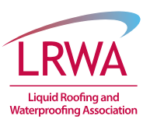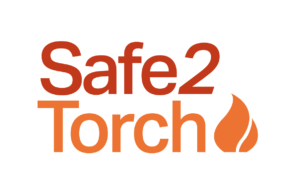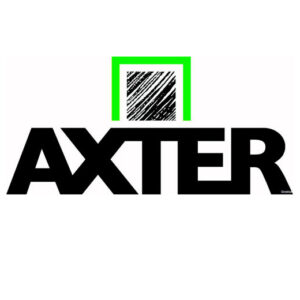Our roofs are not just about aesthetics or environmental benefits; they are also designed to support the building below.
From improving insulation and reducing energy costs to managing rainwater and enhancing structural integrity, our roofs provide tangible benefits to the buildings they crown.
Enhancing thermal performance to reduce heating and cooling costs.
Efficiently managing rainwater to prevent flooding and support irrigation.
Using innovative solutions to reinforce and protect the building's structure.
Our approach encompasses every aspect of your roof’s lifecycle, ensuring a seamless and integrated experience from design to maintenance.
Our design philosophy is rooted in innovation and sustainability. We work closely with you to understand your vision and the specific needs of your building and its surroundings.
Tailored Solutions: Each design is customised to meet the unique requirements of your project.
Innovative Techniques: We incorporate the latest in green technology and sustainable practices.
Visual Appeal: Our designs enhance the architectural beauty of your building.
We ensure that only the highest quality materials are used in our roofscape projects. Our trusted supplier allows us to source the best products at competitive prices, guaranteeing durability and performance.
Premium Materials: We select materials that are robust, sustainable, and suited to your specific environment.
Cost-Effective: Our supply chain efficiencies translate into cost savings for you.
Sustainability: We prioritise eco-friendly materials that reduce environmental impact.
Our installation process is carried out with precision and care by our team of experienced professionals. We adhere to the highest standards of safety and quality, ensuring that your roofscape is installed correctly and efficiently.
Expert Installation: Our trained technicians handle every aspect of the installation.
Safety First: We follow stringent safety protocols to protect our workers and your property.
Timely Execution: We commit to completing projects on schedule, minimising disruption to your operations
To keep your roofscape in optimal condition, we offer comprehensive maintenance services. Regular upkeep not only extends the life of your roof but also ensures it continues to perform at its best.
Routine Inspections: Regular check-ups to identify and address potential issues early.
Preventative Maintenance: Proactive measures to prevent major problems and costly repairs.
Responsive Support: Our team is always ready to respond to any maintenance needs promptly.
Compliance and best practices are central to our company—we collaborate with leading industry bodies and associations to ensure excellence.
100% of site personnel hold appropriate CSCS
All our installers hold relevant trade NVQs
Tamaris Roofing are Axtershield accredited Installers






The major harmful emissions from burning LPG are similar to those from other internal combustion engines: Carbon monoxide (CO) Hydrocarbons (HC) Nitrogen oxides (NOx). 1 kg of LPG produce 3 kg of CO 2 .
Learn more about the Hot Melt Code of Practice

The buildings and construction sector stands as the foremost contributor to greenhouse gas emissions, representing an overwhelming 37% of the total global emissions. Given its significant contribution to climate change, addressing emissions within our projects is paramount to achieving sustainability goals and mitigating the impacts of global warming.
The built environment, with the construction sector playing a pivotal role, presently accounts for approximately 40% of the UK’s carbon emissions. Moreover, estimates suggest that the construction sector contributes up to 11% of global carbon emissions. This underscores the significant impact of construction activities on carbon footprints, highlighting the urgent need for sustainable practices and innovations within the industry to mitigate climate change.
Self-Adhesive Roofing Felt requires no flames during installation, enhancing safety and simplifying the application process. It is manufactured from a polyester base with an SBS (Styrene Butadiene Styrene) bitumen coating.
The release film protects the underside of the sheet and can be easily removed during installation, in compliance with BS 8217: 2005, ‘Code of Practice for Reinforced Bitumen Membranes for Roofing.
The self-adhesive properties eliminate the need for gas torches, hot works, hot bitumen, and other messy sealants, making installations simpler and less time-consuming.
Single layer or multi-layer systems are ideal for roofing applications such as porches, garages, extensions, and dormer windows. They are also suitable for larger-scale projects due to their easy, no-fire installation.
Whether roller-applied, poured, or sprayed, the adhesives used to create warm roof insulated systems are flexible and feature high bond strengths. As a responsible and diligent roofing company, Tamaris Roofing is committed to ensuring the safest possible installation methods for our employees, clients, and the industry.
When a fully built-up system is utilised, primers, activators, torch-free membranes, and insulation adhesives can all be employed. Primers must be suitable for application in any season to ensure an adequate bond that resists wind uplift, with activators available to strengthen this bond.
Advanced self-adhesive technology is used in bitumen membranes for bonding to the substrate. The factory-applied adhesive is protected by a thin release film to prevent sticking inside the roll. During application, the installer uses the peel-back release film to unroll the membrane onto the surface.
The laps are welded using heat, and a visible bitumen bead from the welded laps indicates a secure and robust installation.

Lifetime emissions from the site should be net zero. Although these sites are generally considered to have a positive impact on emissions reduction because of the production of renewable electricity, there is still the need to ensure that lifetime emissions from the construction, operation and decommissioning of sites are minimised, by for example electrifying the construction and maintenance fleet or by offsetting embedded emissions from the production and construction of the site.
All ancillary buildings onsite should also aim to be net zero. Low carbon construction materials and practices should also minimise the carbon footprint of the development e.g. by local procurement and minimising transport of materials; also supporting the local economy and green growth and seeking to maximise social value benefits throughout the project lifetime in procurement, construction and operation processes. Solar developments should also contribute to the greening of the local economy through increasing green jobs, and green sector skills through upskilling their workforce for example, as these skills will be transferable for both large- and small-scale solar installations. This will also support the Essex Climate Action Commission recommendation to “make Essex a centre of innovation for emerging renewable technologies (e.g. small scale nuclear, & manufacturing of renewables products such as solar tiles)”.
For the full article visit The Essex Design Guide. Also visit Essex Climate Commission to learn more.